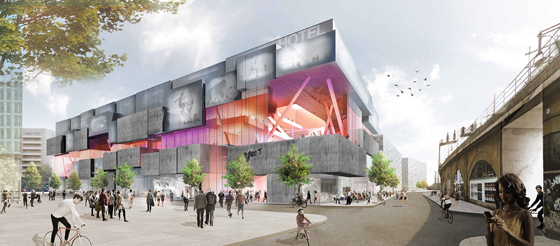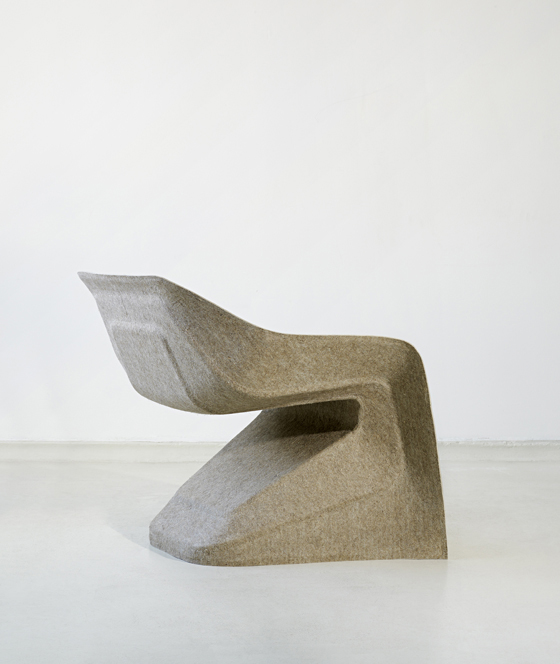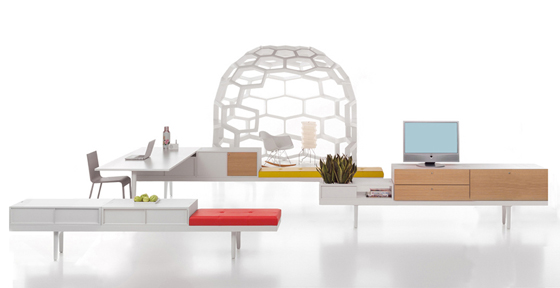Roll out the red carpet: Domotex 2018
Brand story by Barbara Jahn-Rösel
Wien, Autriche
04.12.17
DOMOTEX will take place in Hanover from 12 to 15 January 2018. With a top-notch lecture programme, the world's leading trade fair for carpets and floor coverings approaches the trend towards individualisation under the motto "Unique Youniverse".
Jürgen Mayer H. put his trust in his own perception of the surrounding environment when he transformed the bustling Times Square in New York into a kind of quiet oasis with oversized street furniture for XXX Times Square With Love
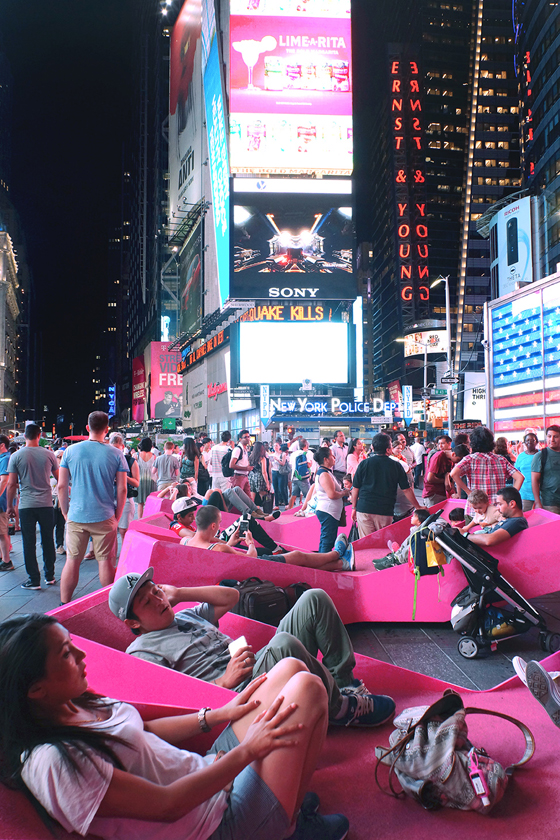
Jürgen Mayer H. put his trust in his own perception of the surrounding environment when he transformed the bustling Times Square in New York into a kind of quiet oasis with oversized street furniture for XXX Times Square With Love
×Diminishing resources, a growing world population, lack of space – we need to face these developments and tackle them head on instead of airbrushing them out of the picture. It will take a massive effort from those involved – designers, manufacturers, consumers. In the future, it seems, all three will be equal partners. Migration to the city – by 2050, two thirds of humanity will be living in an urban environment – is leading to a changed awareness of the space in which we live and make our home. There will be less of this space for all of us. However, at the same time, this restriction in terms of quantity provides a major opportunity for applying greater quality to the design of space which is actually available to us. As a matter of fact, people’s growing sensitivity to their material environments is reflected in the increasing demand for more individualised products, tailor-made to the tastes and lifestyles of consumers.
Fertile ground
In line with its principal theme 'Unique Youniverse', which focuses on the powerful trend towards individualisation, Domotex 2018 creates a stage on which ideas relating to this development can be sketched out, thoughts exchanged, projects planned and subsequently carried out. The background to this is the field of interior design which offers a wealth of opportunities for detailed individualisation. The flooring industry in particular is in the fortunate position of being able to respond to customers’ wishes in a variety of ways – thanks especially to digitalisation.
Architect Jürgen Mayer H. works with his partners on the interfaces between architecture, communication design and new technologies. In the co-determination of the consumer, he sees both a challenge and great opportunities
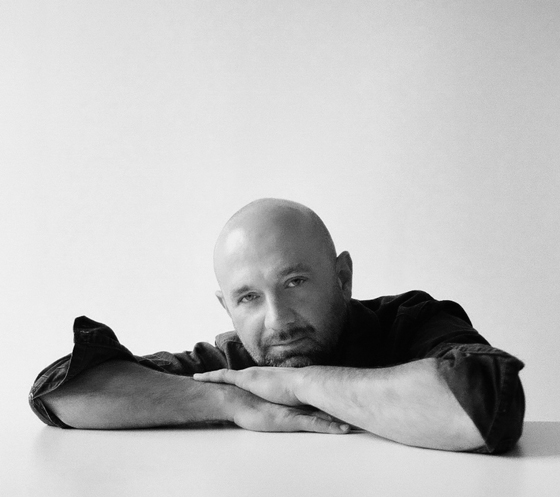
Architect Jürgen Mayer H. works with his partners on the interfaces between architecture, communication design and new technologies. In the co-determination of the consumer, he sees both a challenge and great opportunities
×Powerful voices
In order to further develop the exhibition’s major theme , Domotex has invited – in addition to prominent expert researchers who examine future developments – creative spirits from the worlds of architecture and design to give some fascinating presentations. Architect Jürgen Mayer H., whose internationally prestigious company works at the interface between architecture, communication design and new technologies, will talk on the subject of 'Retail Interactive: Virtual vs. Real?'. Designer Werner Aisslinger, who specialises in applying unconventional materials and new technologies to the world of design, is presenting a lecture entitled 'Modular Design: Individual vs. Serial?'
How co-work works
Architonic separately interviewed the architect and designer – both of them based in Berlin and accordingly, true city dwellers – on their current ideas and how they see the future.
Jürgen Mayer H.'s firm won the competition for the VOLT Berlin shopping and experience centre. Due to its distinctive event-driven character, the project differs significantly from other shopping centers

Jürgen Mayer H.'s firm won the competition for the VOLT Berlin shopping and experience centre. Due to its distinctive event-driven character, the project differs significantly from other shopping centers
×People are no longer prepared to have trends prescribed to them and are looking to create their own private universe. They are ignoring what is generally popular, and instead searching for what appeals to them individually. In general terms, this growing departure from the mainstream will have a significant impact. What form do you think this impact will take?
Werner Aisslinger: The online world in particular enables people to obtain the information they themselves are looking for, and therefore, we can all accumulate our individual selection of opinions, preferences and attitudes. In spite of this, however, people are social beings who enjoy being part of a group or community. In the future, these groups and communities will become not only less coherent but also more ephemeral and rich in variations – in other words, instead of the mainstream we'll have lots of small parallel streams …
Jürgen Mayer H.: At the economic level, this trend will be accompanied by increasing differentiation on the markets, which represents both a challenge and an opportunity for manufacturers. At the social level, the wish for individuality also reinforces a sense of community. At first sight this may seem paradoxical, but the rise of communities is clear proof of how a highly individualised society can develop new forms of support and solidarity. By banding together people can realise their individual life plans and wishes.
For designer Werner Aisslinger, the fact that consumers are increasingly demanding individualised variants of their products is a natural consequence of the development of our civilisation

For designer Werner Aisslinger, the fact that consumers are increasingly demanding individualised variants of their products is a natural consequence of the development of our civilisation
×As an architect and a designer you have chosen a profession which aims to create spaces and objects that are intended to make people's lives more interesting, enjoyable and attractive. When designing how can you satisfy the call for greater personalisation?
Jürgen Mayer H.: With curiosity, openness to new stimuli and by talking to people, listening to them and asking questions. And also by provoking and challenging them, in order to reveal the essential elements and limits which make up people's lives.
Werner Aisslinger: Personalisation and customising will take place no matter what, and part of the responsibility for design will be transferred to the user. Of course, this doesn't mean that all users will become artists and creative spirits, but they will be part of a world of algorithms which provides them with tools for the customisation of products and spaces.
Always keeping future users in mind, Werner Aisslinger lends functions a form, but leaves options open when it comes to colour and in some cases, material, such as the Hemp chair for Moroso and the Juli chair for Cappellini
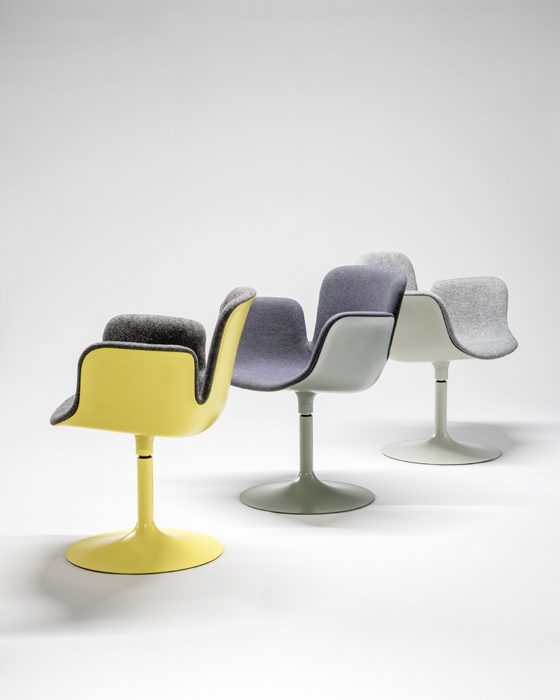
Always keeping future users in mind, Werner Aisslinger lends functions a form, but leaves options open when it comes to colour and in some cases, material, such as the Hemp chair for Moroso and the Juli chair for Cappellini
×If we will all be able to shape for ourselves not only individual products but also the surroundings in which we live, this will lead to direct interaction between manufacturers and consumers. Consumers will become part of the design process. Do you welcome this or is it a development you would prefer didn’t happen?
Werner Aisslinger: We will have design sharing – however, in turn the algorithms used by consumers will themselves be developed by creative people, by designers and architects. The only thing that will change is the profile of the creative spirit.
Jürgen Mayer H.: Design and architecture always develop as a kind of 'act of complicity' between different protagonists.
In the multifunctional office system Level 34 for Vitra and in the bathtub Grid for Kaldewei, Werner Aisslinger demonstrates his skills in playing with form and leaves the user many opportunities to actively participate in the design process
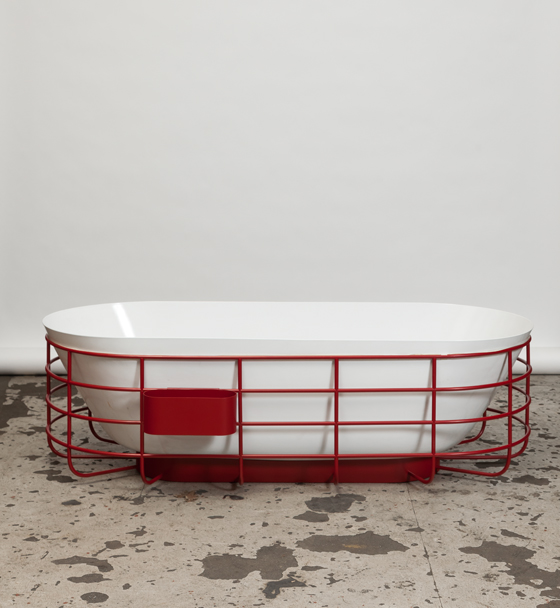
In the multifunctional office system Level 34 for Vitra and in the bathtub Grid for Kaldewei, Werner Aisslinger demonstrates his skills in playing with form and leaves the user many opportunities to actively participate in the design process
×How much participation in the process would you be able to accept?
Jürgen Mayer H.: Dialogue is always an important component when it comes to the development of an idea or a design.
Werner Aisslinger: I find this process exciting and not in the least intimidating – it's the evolution of our civilisation, which we can't hold back anyway.
In your opinion what opportunities are created by the movement towards more 'bespoke living'?
Werner Aisslinger: In this case too, opportunities arise from the process of constant change – furnishing will,in the future, become more temporary and divided into short phases of our lives. And these phases will then be highly intensive and 'bespoke'.
Jürgen Mayer H.: Today, we can all design our living space according to our personal wishes and ideas to a much greater extent. However, in turn, we also have a much greater obligation than in the past to think about the form this design takes. Freedom of choice also brings with it the obligation to make decisions.
© Architonic


